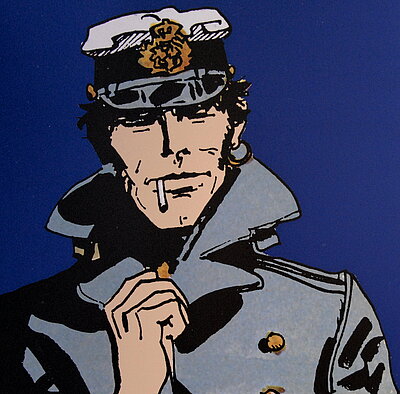The first European sailors
Its history dates back to around the XVᵉ century, a time when the first European sailors, faced with the rigours of the marine environment, were looking for a garment that was both robust and protective against the raging elements.
According to historical accounts, the origins of the peacoat can be traced back to the coasts of North Africa, where navigators discovered a small cape worn by Barbary pirates. This cloak, known locally as a "qaba", was reputed to be wind and water resistant, offering invaluable protection during perilous sea crossings.
Adopted by the British Royal Navy
From the 19th century onwards, the peacoat was adopted by the British Royal Navy. In France, its first official description appeared in 1845 in correspondence from the Minister of the Navy, and it was officially adopted in 1848 under the internal code 45024.
Originally, the peacoat was distinguished by a row of ten buttons decorated with an anchor, arranged in points along the collar. To make it waterproof, sailors coated it with a primer made from tar, tallow and turpentine oil. It gradually became the standard uniform, replacing the paletot previously in force, from 1874.
The "Loup de Mer" look
In the creative tumult of the 1950s and 1960s, a trend emerged that dazzled with character and daring: the "Loup de Mer" look.
The sharpest minds of the era, such as Jean Cocteau, Boris Vian, Jacques Prévert and Jacques Brel, embraced this distinctive aesthetic. Their allure was imbued with a mystical aura, evoking the soul of intrepid sailors and adventurers of distant seas.
Later, Lou Reed, the Rolling Stones and Patrick Dewaere were all bewitched by the raw, authentic charm of the 'Loup de Mer' look.
In haute couture
In 1962, Yves Saint Laurent was one of the pioneers to reinvent the peacoat in haute couture, infusing it with a new elegance and refinement. His bold reinterpretation of the peacoat played a major role in its rise up the catwalk and its popularisation among a wider audience.
Subsequently, other fashion icons such as Jean-Paul Gaultier and Yohji Yamamoto were also captivated by the potential of the peacoat. Each brought their own vision and distinctive style to this iconic garment.
The character of Corto Maltese
Since its creation by Italian author Hugo Pratt in 1967, the character of Corto Maltese has become an icon of European comics.
Among the elements that contribute to his legend, the peacoat occupies a special place. As the centrepiece of his wardrobe, the peacoat embodies the timeless and mysterious allure of the adventurous sailor, adding a visual and symbolic dimension to his iconic charisma.

A living legacy of maritime history
The timeless silhouette and superior quality of the peacoat make it much more than just a garment: it's a living legacy of maritime history, a timeless style icon that has stood the test of time with elegance and distinction. A specialist in iconic marine clothing for over 100 years, Dalmard Marine has made the real peacoat its flagship piece. The century-old Breton brand is involved in every stage of the peacoat's life cycle. They are designed in the purest tradition, using French woollen cloth.
![[Translate to Anglais:]](/fileadmin/_processed_/7/6/csm_L_Oeil_de_Paco_-_Dalmard_marine_2023__107__6423a72f6b.jpg)